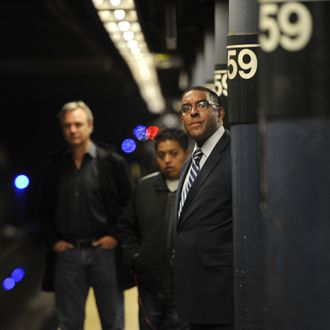
After two subway riders were fatally pushed onto the tracks in recent weeks, with several others jumping or falling to their death, the MTA responded by increasing the frequency of its warning about standing away from the platform edge. At its monthly board meeting on Monday, agency officials said they still think “changing customer behavior” is the best immediate solution, but they’re considering other alternatives. One promising option: A “track intrusion” system that would use laser beams to detect when someone is on the tracks. “You could tie it in to an alarm system, flashing lights, things of that nature, to warn people someone is on the roadbed, or out if the safe location of the platform,” said MTA interim executive director Tom Prendergast. “It’s primarily used for security reasons but we’d look to use it here for safety.”
The pricetag is unclear, but presumably it’s less than the roughly $1 billion it would cost to outfit every station with floor to ceiling doors between the platform and the train. The idea gained traction in recent weeks, but CNN reports that Prendergast gave a long list of challenges that would make installing the barriers prohibitively expensive: stations have unique design features, train cars of several different sizes are used throughout the system, and platform edges would have to be reinforced to support the walls. “When the system was designed over 110 years ago, it didn’t plan for that,” he explained. “It’s hard to incorporate into the system now.”
While the subway system can’t adopt modern safety technology without a major renovation, in other areas, the rest of the world hasn’t caught up to the MTA. The New York Times reports that the agency had hoped to phase out MetroCards between 2012 to 2015 and have riders pay by waving credit or debit cards with embedded computer chips. “We originally thought that these contactless cards, distributed by banks, would be widely distributed and in wide use today,” said Michael DeVitto, executive vice president in charge of fare collection for New York City Transit. “That’s not the case.” Now, the MTA is trying to find another payment method that doesn’t involve a technology most people don’t have in their wallets. They’ll have to move fast, since MetroCard equipment wasn’t designed to last past 2019.





























